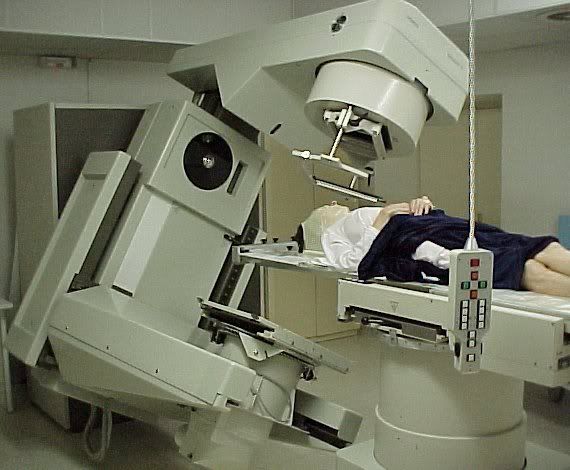Exercise Preferences of Endometrial Cancer Survivors.
Physical exercise has received considerable attention in recent years as a means of alleviating some of the physical, psychological, functional, and emotional quality of life issues that present in cancer survivors. To date, the positive effects of exercise on these parameters have been demonstrated in a number of different cancer survivor populations including breast, prostate, colorectal, multiple myeloma, and non-Hodgkin lymphoma. Although support for the potential benefits of exercise is increasing, relatively few cancer survivors exercise regularly, with exercise rates dropping drastically during treatment, and remaining low even posttreatment.
Because of the potential benefits of exercise and the low exercise participation rates, researchers are beginning to explore methods for promoting exercise in cancer survivors. Although a number of studies have successfully explored social cognitive correlates of exercise motivation, relatively little is known about the exercise programming and counseling preferences of cancer survivors-factors that would also presumably influence exercise participation. Only 4 studies to date have examined exercise preferences in cancer survivors, and all have been restricted to survivors of only a few tumor types.
We recently conducted a population-based survey of endometrial cancer survivors to obtain a better understanding of the exercise behavior, motivation, and quality of life issues in this relatively understudied cancer survivor population. We have previously reported that endometrial cancer survivors meeting public health guidelines for exercise and body weight reported significantly and meaningfully higher quality of life than those not meeting guidelines. We also reported that only 30% of the sample were meeting public health exercise guidelines and 72% were overweight or obese. These findings highlight the importance of exploring exercise programming and counseling preferences for this population to guide behavior change interventions.
Discussion
This study explored the exercise programming and counseling preferences of a population-based sample of endometrial cancer survivors. A secondary purpose was to examine the influence of a number of demographic and medical variables on exercise preferences. Results indicated that most participants were interested in an exercise program designed for endometrial cancer survivors (76.9%). Most participants also indicated that they felt they would be able (yes/maybe) to participate in an exercise program designed for endometrial cancer survivors (81.7%). These findings are slightly lower, but similar, to those of other studies that also indicated that participants expressed an interest in exercise programming at some point after their cancer diagnosis. These findings support the desire for the availability of exercise programming services for endometrial cancer survivors.
Participants also most frequently, from the choices available, indicated a preference for exercise counseling from an exercise specialist affiliated with a cancer center (40.9%), preferred the location to be a cancer center (41.0%), and preferred to have face-to-face counseling (82.8%). These findings are partially in line with those of Jones and Courneya, who found that 77% of their study participants indicated a preference for exercise counseling from an exercise specialist at a cancer center and that 85% wished to have face-to-face delivery of that counseling. The lower percentage of participants reporting a preference for cancer center-affiliated counseling in the present study may be because of differences in the time elapsed since diagnosis; participants were within 1.5 years of their diagnosis date in the Jones and Courneya 16 study, whereas in the present study, participants were up to 10 years postdiagnosis. Presumably, those closer to their diagnosis date would feel more of a connection with their cancer center than those many years past their diagnosis date.
The preference for face-to-face counseling is consistent with Jones and Courneya, highlighting the importance of this counseling modality for cancer survivors. The study of Demark-Wahnefried et al, however, reported mailed literature as the most commonly reported preference for counseling modality. It does not appear, however, that participants were given the option to choose face-to-face counseling in that study. Interestingly, our logistic regression analyses indicated many significant moderators of this preference. Participants who preferred face-to-face counseling were most likely not currently meeting public health guidelines for exercise, were overweight or obese, were making less than $60,000 per year, and were married. This may be the case because perhaps participants who are not regular exercisers, or who have the additional obstacle of being overweight/obese, may feel the need for more direct support and encouragement that comes from face-to-face counseling. In addition, having lower income may be associated with a preference for face-to-face counseling because they may have less resources available to them, and consequently, may be eager to have a face-to-face counseling service available to them that they otherwise may not be able to afford.
Most participants indicated that they would have preferred to start an exercise program posttreatment (75.8%). Specifically, most participants indicated they would have preferred to start an exercise program immediately after treatment (26.8%) or 3 to 6 months after treatment (39.3%). These results are similar to those of Vallance et al, who found that more than half of the participants wished to start an exercise program at least 3 months posttreatment, and Jones and Courneya, who found that 51% of participants preferred to start an exercise program after treatment.
Participants not currently meeting public health exercise guidelines, who were overweight or obese, and having received adjuvant treatment were more likely to have preferred to start an exercise program before or during treatment. This may be because those survivors who were currently not exercising may have a long history of being sedentary, and therefore, may have been more in need of an exercise program compared with those who were already exercising. Obese and overweight participants may also be interested in initiating an exercise program early during the cancer experience as they may feel, because of the potential benefits of weight loss, that they should also begin exercising as soon as possible. Those individuals who received adjuvant treatment may have felt that exercise may have eased some of the treatment-related side effects, and therefore, they indicated the preference for the initiation of an exercise program early in the cancer experience.
Most participants reported that they had no preference for exercise partners (23.8%), or that they preferred to exercise alone (23.8%) or with friends (22.6%). At home (32.7%) and no preference (32.7%) were the most commonly listed places for preference for exercise. These results are somewhat similar to those of Jones and Courneya and Vallance et al, who found that the most common preference for exercise partners was alone (43.6%, 30.8%) or no preference (18.9%, 34.0%), and that home (39.8%, 42.6%) was the most commonly listed preference for place of exercise. The greater preference for "alone" and "at home" in the Jones and Courneya and Vallance et al studies may be because nearly half of the 2 samples were men, and men may have very different preferences for exercise partners and location than women due to various social factors. These findings are, nonetheless, in line with past research on older adults who have been found to prefer to exercise at home and alone.
Moderate-intensity exercise was found to be the preference for exercise intensity in this population (61.1%). This figure is comparable to that of Jones and Courneya and Vallance et al, who found that 56% and 62%, respectively, of their samples preferred moderate-intensity exercise. These findings suggest that exercise interventions for endometrial cancer survivors should be directed towards moderate-intensity activities. Not surprisingly, in the present study, participants who reported meeting the public health guidelines for exercise were more likely to prefer moderate-to-vigorous exercise compared with those individuals who were not exercising regularly. This suggests that nonexercisers would likely prefer lower-intensity exercise, at least to begin.
Nearly 60% of participants indicated they preferred different activities at each exercise session, whereas the other 40% preferred activities to be the same. A fairly even number of participants preferred supervised (53.1%) to unsupervised (46.9%) exercise, and most participants indicated they wanted scheduled exercise sessions (64.5%) compared with spontaneous/flexible sessions (35.5%). Jones and Courneya and Vallance et al reported similar findings, with an almost even number of participants preferring each of the 2 options for each item. The implications of these findings are that exercise interventions aimed at endometrial cancer survivors should be flexible enough that participants can make choices about the degree of supervision they desire, the kinds of activities they do, and whether or not the sessions are scheduled.
Walking was found to be the type of exercise participants were most interested in during the summer (76.9%) and winter (68.5%). These findings were similar to that of Jones and Courneya, who found that 80.6% of participants preferred walking to other types of exercise; however, a lower percentage indicated this preference in the present study. Rogers et al and Vallance et al also found that walking was the preferred activity of breast cancer survivors and non-Hodgkin lymphoma survivors. The findings of the present study are also consistent with literature on older adults in the general population that has found that preference for walking as a form of exercise increases with age.
More than half of the participants reported having at least 1 piece of exercise equipment at home. The most common equipment reported was a stationary bike (31.1%) and a treadmill (26.4%). Only 20.3% of participants reported having a current membership at a fitness center. These findings suggest that many endometrial cancer survivors could potentially exercise at home given the large percentage that own home exercise equipment and indicate that exercise interventions for this population should at least contain a home-based option.
Our study has a number of strengths and limitations that should be noted. Firstly, this study is the first to examine exercise preferences in endometrial cancer survivors and one of the few to examine exercise preferences in cancer survivors in general. In addition, the sample size was sufficiently large to examine the moderating effects of various demographic and medical variables. Limitations include the potential overrepresentation of proponents of exercise in this sample; presumably, those survivors who were the most interested in exercise were the most likely to respond to the survey.




0 Comments:
Post a Comment
<< Home